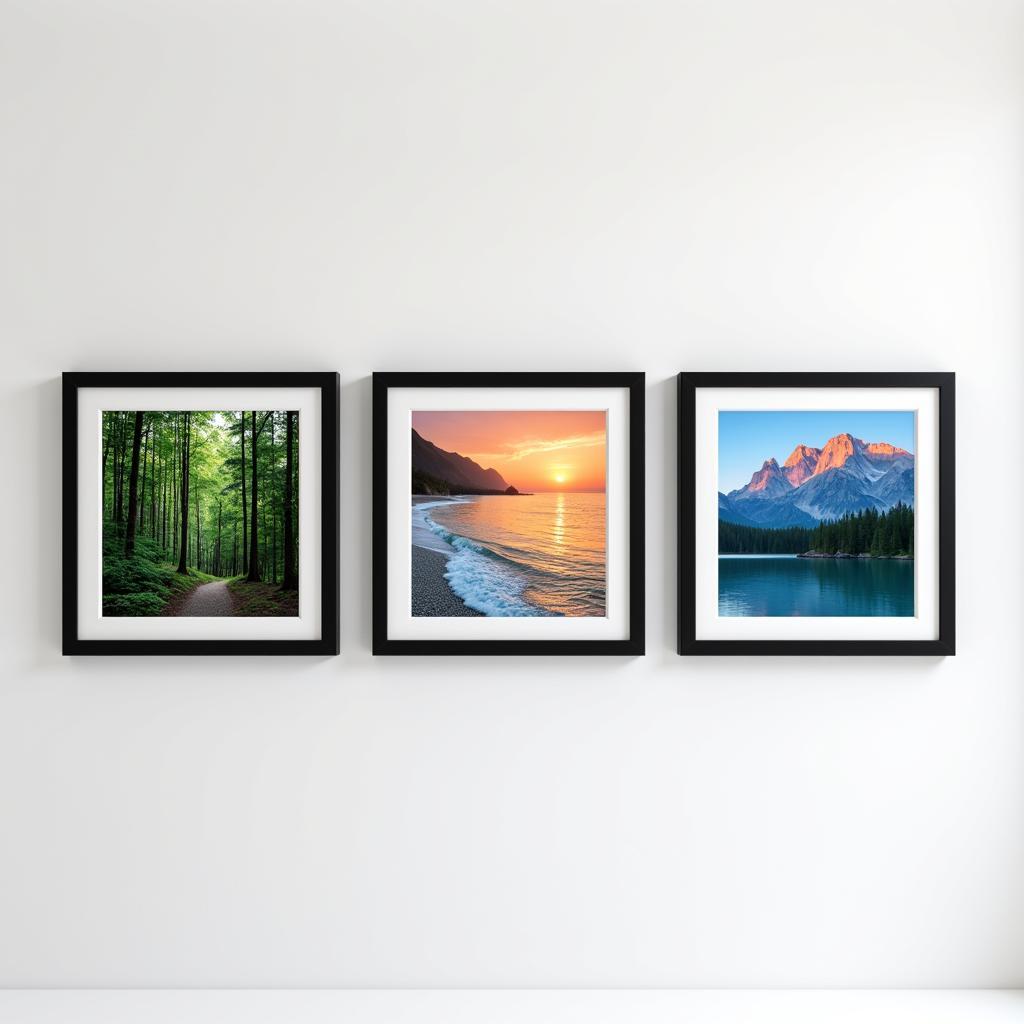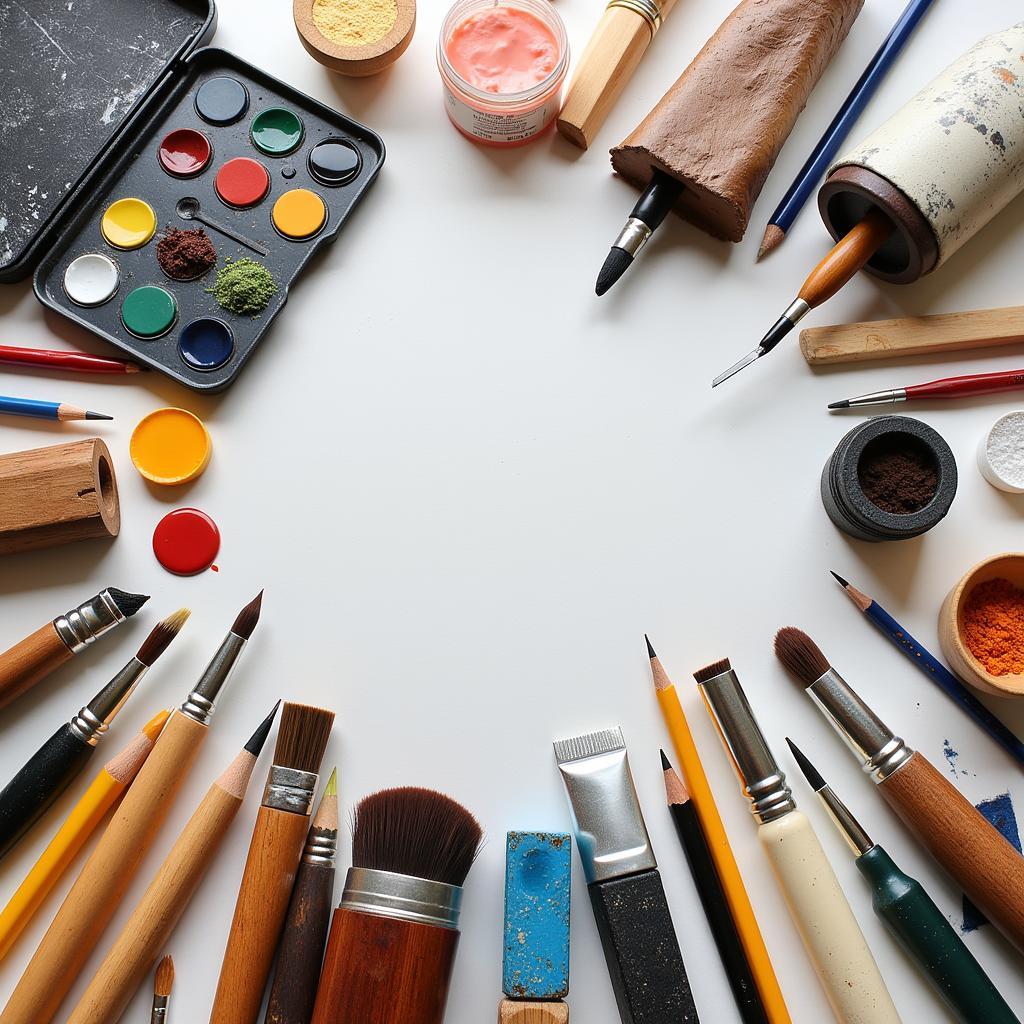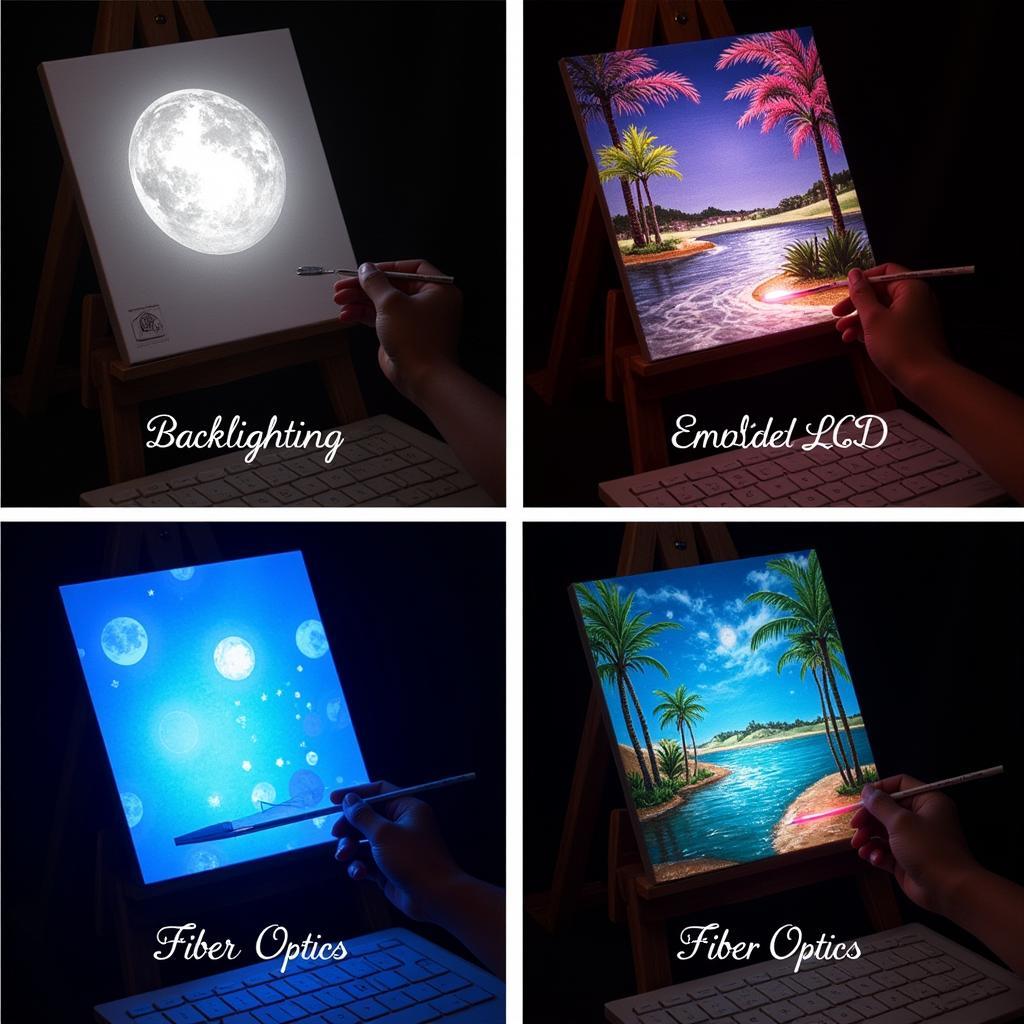Unveiling the Magic of Concept Art
Concept art, a term often shrouded in a veil of mystique, forms the bedrock of any visual storytelling medium. From blockbuster movies and immersive video games to captivating animation and graphic novels, concept art breathes life into the initial sparks of imagination. It is the process of transforming abstract ideas into tangible visual representations, laying the foundation for entire fictional worlds and the characters that inhabit them.
What is Magic Concept Art?
Within the realm of concept art, “magic” takes on a multifaceted meaning. It refers not only to the fantastical elements we often associate with the term—wizards, spells, and mystical creatures—but also to the transformative power of artistic vision itself. Magic Concept Art, therefore, encompasses a wide range of styles and subjects, united by the common thread of bringing the extraordinary to life.
Imagine the intricate details of a magical staff, pulsating with otherworldly energy. Or perhaps a sprawling cityscape, illuminated by the glow of enchanted runes. These captivating visuals, brought to life through digital painting, photobashing, or traditional media, serve as blueprints for 3D modelers, animators, and other creative professionals involved in shaping the final product.
The Power of Visual Storytelling in Concept Art
One of the key aspects that elevates concept art beyond mere illustration is its emphasis on visual storytelling. Each piece, whether it depicts a character, a creature, or an environment, must convey a story, evoke an emotion, and contribute to the overall narrative.
 Concept Art Character Design: A Fierce Warrior
Concept Art Character Design: A Fierce Warrior
Consider, for instance, the concept art for Beauty and the Beast. The artists’ masterful use of color, light, and composition transports viewers into the heart of Belle’s enchanting yet perilous world. Similarly, the gritty realism of The Witcher concept art perfectly captures the dark fantasy atmosphere of the game.
Exploring Different Styles and Techniques
The beauty of magic concept art lies in its diversity. Artists can draw inspiration from a myriad of sources, blending historical references, mythological creatures, and futuristic technology to create truly unique and captivating visuals.
Digital Painting and Illustration
Digital painting has become increasingly popular in recent years, allowing artists to achieve stunning levels of detail and realism. Programs like Photoshop and Procreate provide a vast toolkit for creating intricate textures, dynamic lighting, and atmospheric effects.
Photobashing and Matte Painting
Photobashing involves combining and manipulating photographs to create concept art with a more photorealistic aesthetic. This technique is often used for environment design, seamlessly blending real-world elements with fantastical creations.
Traditional Media
While digital tools have revolutionized concept art, traditional media like pencil sketching, charcoal drawing, and watercolor painting remain relevant and cherished for their unique qualities.
 Concept Art Environment Design: An Underwater City
Concept Art Environment Design: An Underwater City
The Role of Imagination and Inspiration
Ultimately, the most crucial ingredient in creating compelling magic concept art is imagination. The ability to dream up fantastical worlds, creatures, and scenarios is what fuels the creative process. Drawing inspiration from mythology, literature, nature, and even everyday life can spark new ideas and push the boundaries of visual storytelling.
Conclusion
Magic concept art is a captivating field that blends artistic skill, technical mastery, and boundless imagination. From the first rough sketches to the final polished illustrations, concept artists play a pivotal role in shaping the visual narratives that transport us to other worlds. Whether you’re an aspiring artist or simply an admirer of the creative process, delving into the world of concept art is a journey well worth taking.
FAQs
1. What software is commonly used for creating magic concept art?
Artists often utilize industry-standard software like Adobe Photoshop, Procreate, and Autodesk Maya for creating magic concept art. These programs offer a wide range of tools for digital painting, 3D modeling, and animation.
2. What are some essential skills for aspiring concept artists?
Aspiring concept artists should possess strong drawing and painting skills, a keen eye for composition and color, and the ability to translate ideas into visual representations. Familiarity with digital art software is also crucial in today’s industry.
3. Where can I find inspiration for magic concept art?
Inspiration can be found everywhere! Explore mythology, fantasy literature, video games, art history, and even the natural world. Don’t be afraid to experiment and combine different elements to create something unique.
4. How can I improve my concept art portfolio?
Focus on developing a strong portfolio that showcases your skills and versatility. Include a variety of pieces, such as character designs, environment concepts, and prop illustrations. Seek feedback from other artists and industry professionals to refine your work.
5. Are there online resources or communities for learning concept art?
Absolutely! Numerous online platforms, like Schoolism, ArtStation Learning, and CGMA, offer courses and workshops taught by experienced concept artists. Online communities and forums also provide valuable opportunities for feedback, networking, and inspiration.
Looking for more artistic inspiration? Check out the vibrant concept art for Nimona and the playful designs of My Little Pony concept art. These examples showcase the diverse range of styles and stories possible within the realm of concept art.
If you’re interested in exploring the intersection of art and technology further, our art games for classroom article offers a fascinating glimpse into how digital tools are transforming art education.
Need help bringing your own creative visions to life? Contact us at Phone Number: 02462573573, Email: danteum@gmail.com, or visit us at Savico Megamall, 7-9 Đ. Nguyễn Văn Linh, Gia Thụy, Long Biên, Hà Nội 10000, Việt Nam. Our dedicated team is available 24/7 to assist you.




